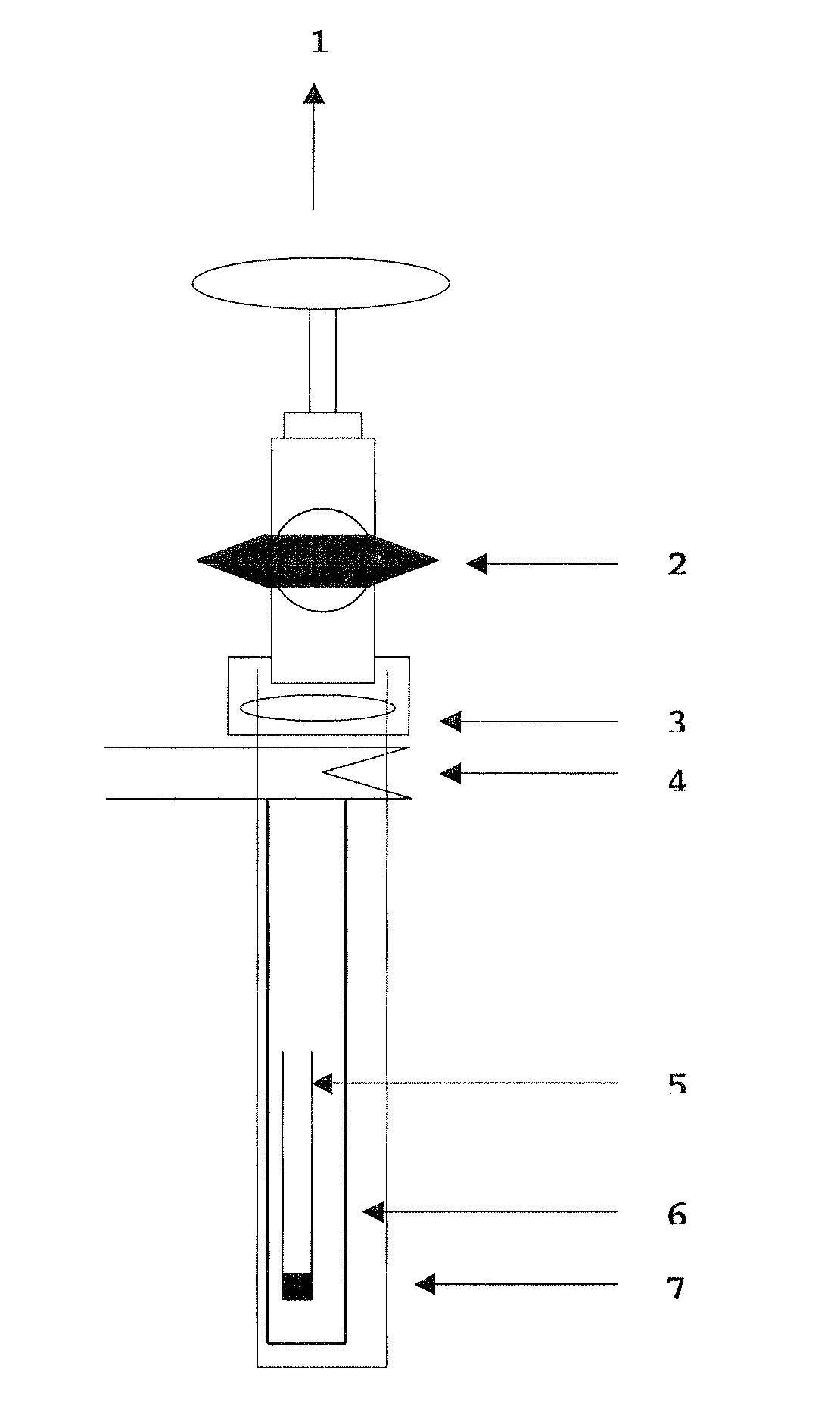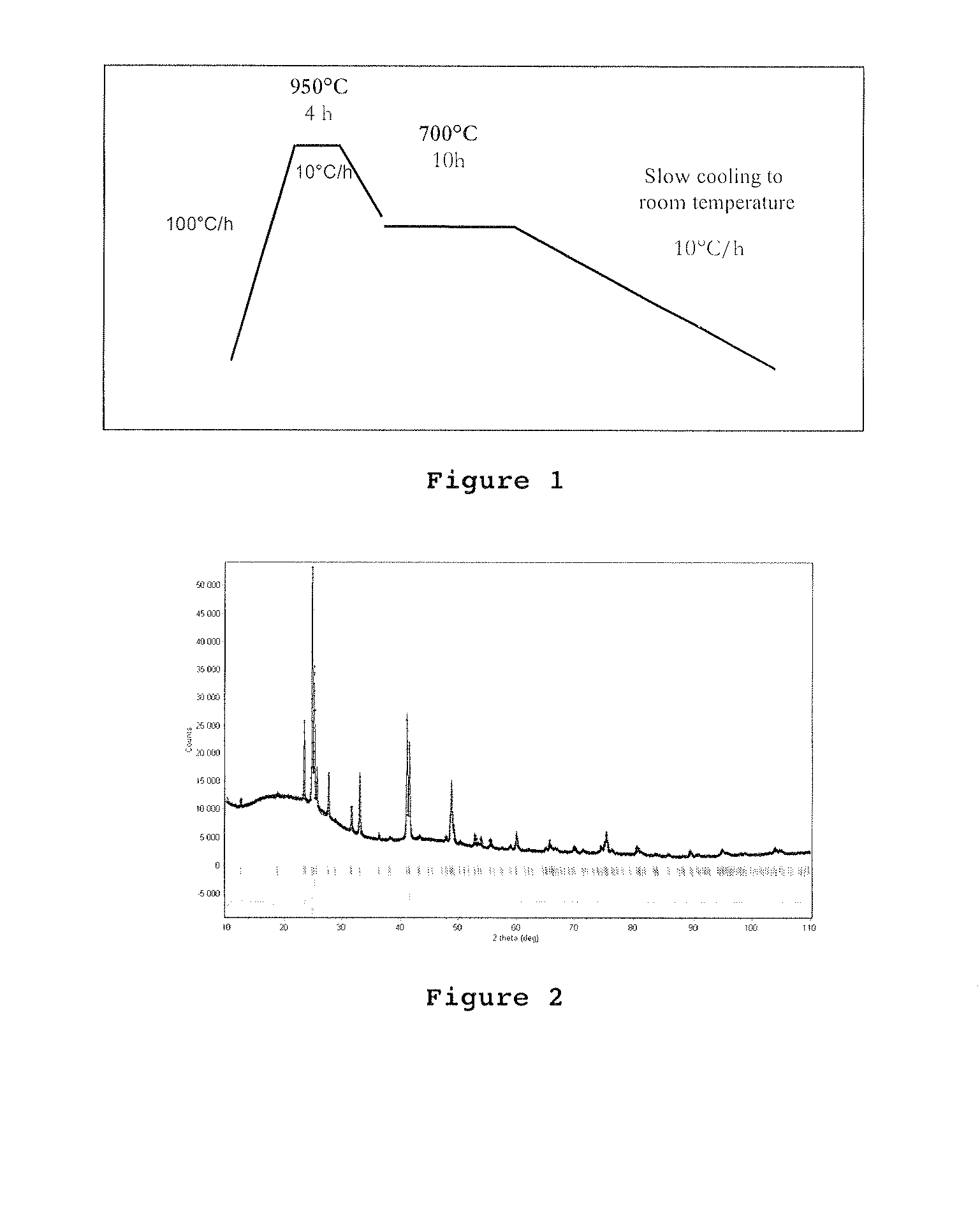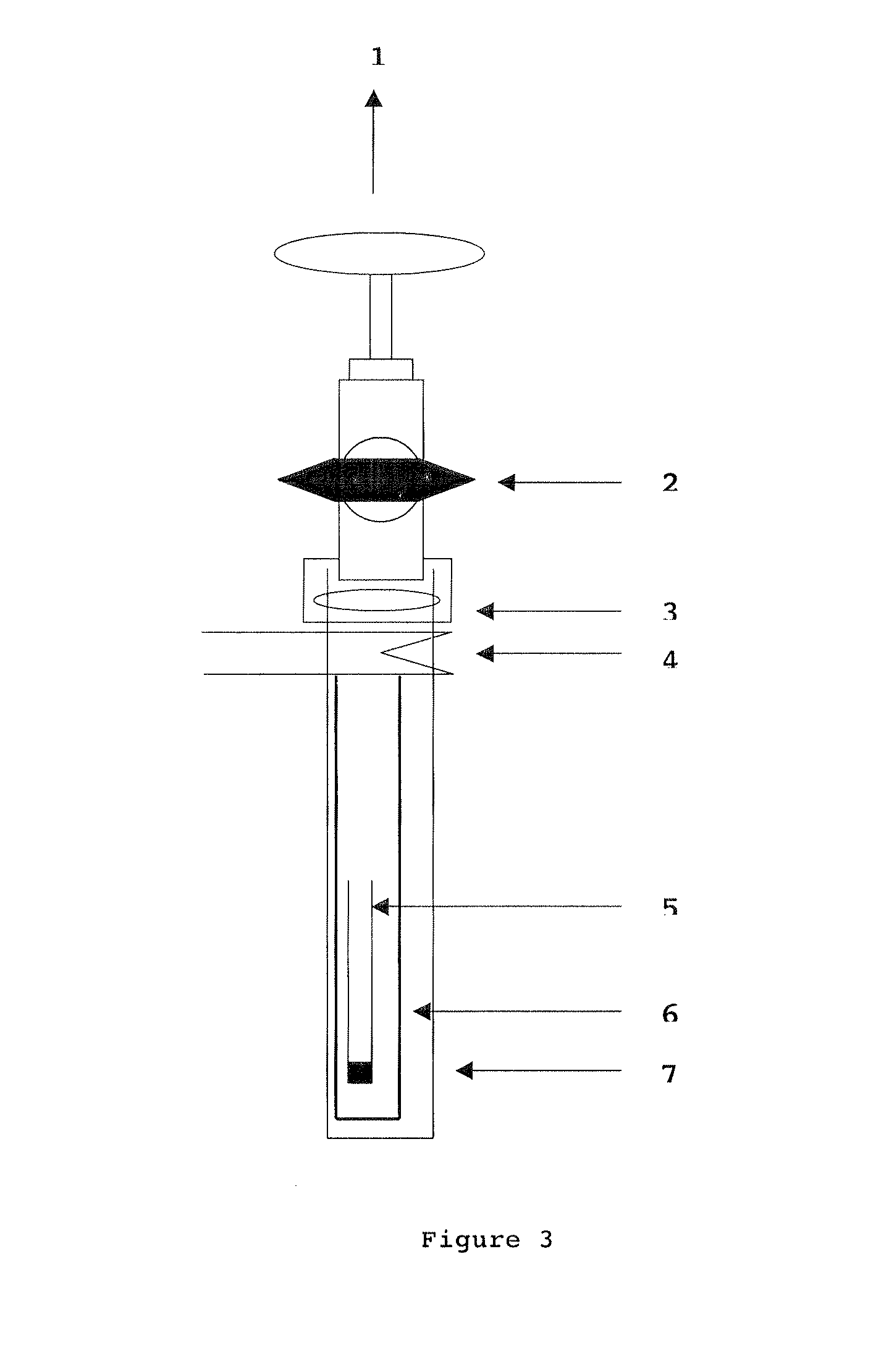Novel marterials including elements of group 14
- Summary
- Abstract
- Description
- Claims
- Application Information
AI Technical Summary
Benefits of technology
Problems solved by technology
Method used
Image
Examples
example 1
Preparation of an Li13Ag5Si6 Alloy
[0149]A mixture of 0.117 g lithium (bullion, pure at 99.54%, Cogema), 0.913 g silver (needles, pure at 99.999%, Strem Chemicals) and 0.237 g silica (powder, pure at 99.998%, Goodfellow) has been inserted in a tantalum reactor sealed by arc welding, itself inserted in a silicon tube which is then sealed under vacuum. This reactor has then been placed in an oven with an increase in temperature from room temperature to 950° C. at 100° C. / h, then 4 hours at 950° C., cooling at 10° C. / h to 700° C., heating at 700° C. during 10 hours, then cooling until room temperature at the rate of 10° C. / h. this thermal profile is illustrated in FIG. 1.
[0150]An elementary semi-quantitative analysis with a microprobe (MEB) and an atomic absorption spectrometry of a crystal isolated from the preparation, provide a compound of Li13Ag5Si6 stoichiometry.
[0151]This compound has been studied by powder and monocrystal X-ray diffraction. The diffraction diagram of the powder i...
example 2
Preparation of an Active Material
[0152]The Li13Ag5Si6 material, obtained after the synthesis, is grinded in an agate mortar to allow a better extraction of lithium.
[0153]This powder is placed in a small alumina tube which is itself placed in a stainless steel tube, the entirety is inserted in a silica tube locked by a valve. The stainless steel tube protects the silica from the attacks of the lithium fumes. The setting is thus constituted of three tubes: the small alumina tube containing the powder, the stainless steel counter tube and the silica tube. Such a setting is illustrated in FIG. 3.
[0154]Then the setting is directly assembled on the vacuum ramp. The primary vacuum is first made using an oil pump, then a secondary vacuum is created with a diffusion pump having a resistance. The vacuum obtained with the silica tube is about of 10−7 mbar. The tube set on the vacuum ramp then slides in a horizontal tubular oven. A cooler is installed at the outlet of the stainless tube to allo...
example 3
Use in Electrochemistry
[0167]The products degraded according to the degradation of example 2 have next been tested in electrochemistry in Swagelock type cells. The imposed rate is 1 lithium in 10 hours and the potential window is comprised between 0.01V and 2V.
[0168]The insertion of lithium in the AgSi matrix allows to reach the Li8AgSi stoichiometry, after the first charge, we extract up to 6 atoms of lithium to reach the Li2AgSi stoichiometry. The capacity progressively decreases during the following cycles (FIG. 7).
[0169]The cyclability curve (FIG. 8) shows that the capacities obtained for the first cycles are very high (1500, 1200 mA.h.g−1).
[0170]To understand the mechanisms, we represented the cycling tests in potentiodynamic mode in FIGS. 9 and 10.
[0171]For the first cycle, during the first discharge we observe an intense peak at 0.02V which corresponds to the plateau of the curve in galvanostatic mode (change in phase), there are then two small peaks at 0.25V and 0.78 V (inse...
PUM
 Login to View More
Login to View More Abstract
Description
Claims
Application Information
 Login to View More
Login to View More - R&D
- Intellectual Property
- Life Sciences
- Materials
- Tech Scout
- Unparalleled Data Quality
- Higher Quality Content
- 60% Fewer Hallucinations
Browse by: Latest US Patents, China's latest patents, Technical Efficacy Thesaurus, Application Domain, Technology Topic, Popular Technical Reports.
© 2025 PatSnap. All rights reserved.Legal|Privacy policy|Modern Slavery Act Transparency Statement|Sitemap|About US| Contact US: help@patsnap.com



